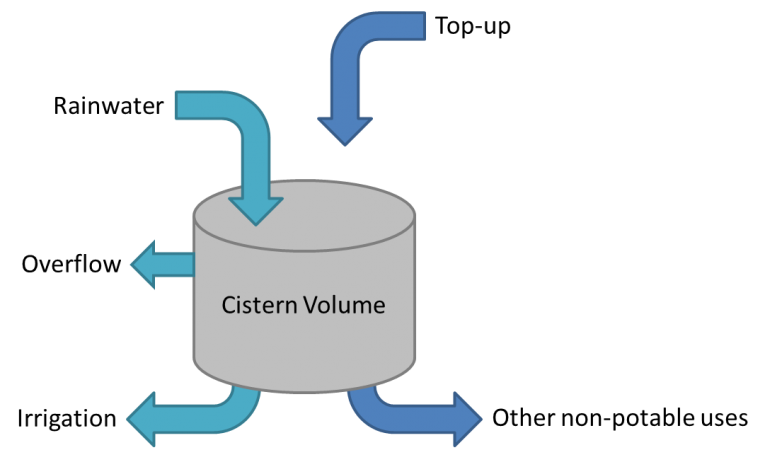Difference between revisions of "Rainwater harvesting: Sizing and modeling"
Jump to navigation
Jump to search
Jenny Hill (talk | contribs) |
Jenny Hill (talk | contribs) |
||
| Line 31: | Line 31: | ||
<p> Once the size of cistern has been determined, it can easily be modelled in many open source and proprietary applications. </p> | <p> Once the size of cistern has been determined, it can easily be modelled in many open source and proprietary applications. </p> | ||
<p> In addition to the cistern size, modelling requires | <p> In addition to the cistern size, modelling requires | ||
| + | </div> | ||
| + | <div class="col-md-4"> | ||
<btnPrimary>The Treatment Train Tool</btnPrimary> | <btnPrimary>The Treatment Train Tool</btnPrimary> | ||
| + | ---- | ||
| + | ===See Also=== | ||
| + | ---- | ||
| + | ===External Links=== | ||
| + | ---- | ||
| + | <table class="table table-hover table-condensed table-bordered"> | ||
| + | <td class="text-center"><i class="fa fa-envelope-open-o"></i> [[Special:SpecialContact|<strong>SEND US YOUR QUESTIONS & FEEDBACK ABOUT THIS PAGE</strong>]]</td> | ||
| + | </table> | ||
Revision as of 20:26, 5 June 2017
Rapid[edit]
Total cistern volume can be estimated by multiplying the depth of design storm....
<panelInfo>
</panelInfo>
STEP RWH tool[edit]
The Sustainable Technologies Evaluation Program have produced a rainwater harvesting design and costing tool specific to Ontario. The tool is in a simple to use Excel format and is free to download.
<panelInfo> RWH Sizing Tool </panelInfo>
The Treatment Train Tool[edit]
Once the size of cistern has been determined, it can easily be modelled in many open source and proprietary applications.
In addition to the cistern size, modelling requires
<btnPrimary>The Treatment Train Tool</btnPrimary>
See Also[edit]
External Links[edit]
| SEND US YOUR QUESTIONS & FEEDBACK ABOUT THIS PAGE |
